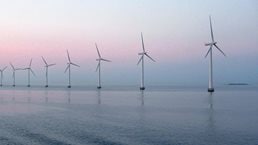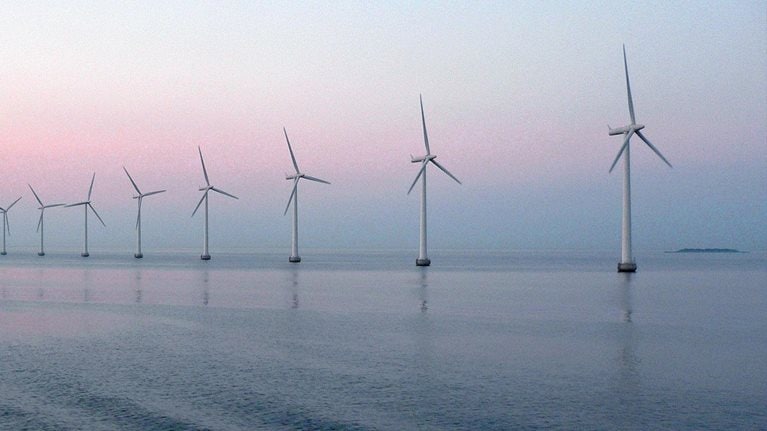This is a challenging time for European energy markets. The war in Ukraine, while foremost a humanitarian crisis, has shaken the European energy market more than any other event in recent history as shocks to gas supply have led to surging natural gas and power prices, high volatility, and supply security risks (see sidebar, “Disclaimer on Ukraine”).1 Europe has so far managed to avoid a sharp slowdown of economic activity by balancing its gas market through increased liquified natural gas (LNG) imports, reduced household demand, and industrial efficiencies and plant closures.2
In the coming years, Europe may need to sustain and intensify efforts to reduce gas demand to manage the supply shock from the ongoing war in Ukraine, which may require a difficult, but doable, set of actions.3 However, while Europe’s energy supply and demand are expected to balance, there is still uncertainty as volatile prices and supply disruptions pose a risk to all sectors of the economy—and Europe may need to prepare to navigate these risks.
In this article, we explore trends in Europe’s energy market over the past year and present key signposts to watch for in the future supply-demand balance. Further, we outline what could help to ensure a balanced and stable European energy market through 2023 and put forward three ways in which businesses can help navigate risk in the energy market.
Year in review: European energy markets in crisis
Prior to the invasion of Ukraine, Russia supplied nearly one-third of European natural gas.4 After the invasion, Russian piped gas flow decreased by more than half from 140 billion cubic meters (bcm) in 2021 to 65 bcm in 2022.5 As Europe lost this volume of piped gas supply from Russia, liquified natural gas (LNG) was purchased as a substitute—increasing LNG imports to Europe by 64 bcm from 2021 levels.6
This shake in the European energy market caused energy prices to spike in 2022: gas prices peaked at $100 per million metric British thermal units (MMBtu), Brent crude oil prices reached $130 per barrel, and coal prices peaked at $441 per ton.7 As a result, Europe spent over €1 trillion more on oil, gas, and coal in 2022 than in 2021—more than doubling the share of GDP spent on energy (Exhibit 1). Although energy prices started to decline in the last quarter of 2022, the tight balance may continue, resulting in higher prices which may in turn cause Europe’s energy spend to remain above pre-war levels until at least 2025—placing further pressure on Europe’s energy market.8

In response to the spike in prices in 2022, Europe observed a 57 bcm drop in gas demand, an 11 percent decrease from 2021, which balanced the market.9 This reduction was driven mainly by a drop in demand in gas for buildings (15 percent) and in industry (18 percent) compared to 2021 levels.10 Meanwhile, in the power sector, gas demand remained relatively stable in 2022, with little impact on overall European gas demand.11
Gas consumption in buildings dropped due to behavioral change
In buildings, the observed household reduction in gas demand throughout the 2022 winter suggests a behavioral change in response to the spike in gas prices. Many European countries saw gas demand decline by 15 to 20 percent, even after controlling for the milder-than-usual temperatures (Exhibit 2).

Energy efficiency and production shutdowns drove gas demand reduction in industry
Industry saw two main drivers of gas demand reduction in 2022: energy efficiency and production shutdowns. For example, according to the ifo Institute, three-quarters of surveyed German industrial companies were able to reduce gas consumption in the last six months of 2022 without cutting production by leveraging energy-efficiency measures.12 Meanwhile, energy-intensive industries, such as fertilizer, chemicals, and steel, saw significant production curtailment in 2022. European aluminum and zinc production stalled at around 70 to 80 percent of total production capacity in the second half of 2022, down from the pre-war baseline of 90 to 95 percent.13 Additionally, fertilizer production dropped to 30 percent of total production capacity in the third quarter, down from the pre-war baseline of 80 percent.14
The reduction in gas consumption did not result in a reduction in overall manufacturing output in Germany in 2022, and Germany (Europe’s largest economy) managed to grow in terms of real GDP over the course of the year.15 However, McKinsey Energy Insights European Gas Buyers Survey found that 57 percent of manufacturers will not be able to continue reducing gas consumption while still maintaining output over the next two years.16 These findings indicate that the energy efficiency levers are increasingly exhausted and that further reduction of gas supply to Europe could substantially impact economic activity.
Would you like to learn more about our Oil & Gas Practice?
A milder winter in the fourth quarter of 2022 reduced demand for gas-fired power generation
Europe’s total power generation saw a drop in 2022 from 2021, driven by a milder winter and reduction in demand (Exhibit 3). Annual gas demand for power generation remained relatively stable in 2022, as greater gas usage during the warmer summer was offset by lower gas usage during the milder winter.17 In addition, Europe was not able to reduce gas-fired power generation due to the lower availability of nuclear power and hydropower in 2022.

Zooming in on the fourth quarter of 2022, gas demand in the power sector decreased by 7 percent from the fourth quarter of 2021, helping Europe to balance gas supply and demand during the winter months (Exhibit 4). The lower consumption in this quarter can be largely attributed to a milder winter, the accelerated expansion of renewable energy sources (RES), the recovery of hydropower following summer droughts in Southern Europe, and recently announced lifetime extensions of coal power generation capacity.

While Europe’s energy markets balanced in 2022, several factors may still impact the supply-demand equilibrium in the coming years. To avoid price spikes, Europe may need to watch for key signposts that could upset the balance.
Year ahead: Key signposts to watch in 2023 and beyond
Throughout this decade, Europe may need to carefully walk the tightrope of balancing natural gas supply and demand to prevent rising prices and economic repercussions. Europe countered the reduced supply in 2022 by lowering natural gas consumption by 57 bcm, and with further demand reductions and new sources of natural gas supply, Europe may be able to maintain the balance over the next several years (Exhibit 5). However, multiple drivers could create a low-supply scenario and Europe would need to reduce its consumption from 2022 levels by another 55 bcm in 2023 to stabilize the market.18

To stabilize gas prices, Europe may need to achieve further reductions in gas demand across buildings, industry, and power generation, with no further decline in Russian piped flows and sustained high LNG imports amid higher competition from Asian gas demand recovery. Even after assuming a 55 bcm gas-demand reduction in 2023, the supply-demand balance for 2023 will ultimately depend on a series of drivers (Exhibit 6). Watching for signposts linked to these drivers may be critical to responding to the many complex factors that can interact to influence the equilibrium and gas prices, including:
- Asian LNG demand development. An Asian LNG demand rebound could create further competition for LNG cargoes, leading to higher prices and potentially reducing European gas supply by up to 35 bcm.
- Russian piped gas flows to Europe. If Russian piped gas stopped completely, Europe could see a sustained supply reduction of 25 bcm from the 2022 fourth-quarter average.
- Winter weather. Although Europe’s gas supply-demand balance benefited greatly from the milder-than-average winter weather in the fourth quarter of 2022, a return to colder winter weather in 2023 may add another 15 bcm to gas demand.
- Power-sector demand reduction. Increasing German and French nuclear availability could offset 5 bcm of gas consumption. Meanwhile, further reducing power demand by 5 percent could reduce gas demand by an additional 14 bcm.
- Sustained demand reduction in buildings and industry. Assuming the behavioral change in building heating persists, Europe could continue to save approximately 19 bcm. Continued industrial shutdowns in 2023 could drive a further 20 bcm gas demand reduction.

Beyond these signposts, an additional LNG regasification capacity of 70 bcm per annum is expected to come online over the next two years in Europe, which may further help Europe achieve a supply-demand balance without price spikes.19 At the same time, these signposts will likely affect Europe’s ability to meet the gas storage target of 90 percent by November.20 While Europe is coming out of winter with high levels of gas storage, there is still a significant gap to fill over the coming six months.21
Power-sector demand reduction could be a key driver of Europe’s gas demand reduction in the near term, but the sector is also highly dependent on gas-fired power.22 As gas power generation determines the marginal price on the power generation merit order curve, nearly tripling the gas price from €70 to €200 per megawatt-hour would likely only decrease gas demand from the European power sector by 8 percent but increase power prices by 70 percent (Exhibit 7).

Consequently, any near-term contribution from the power sector to reduce gas demand would unlikely be driven by high gas prices and instead result from an overall reduction in power demand.23
In the future, Europe would likely need to continue to reduce its natural gas demand through specific drivers and policy initiatives to reduce energy dependence—including Fit for 55, REPowerEU, and national policy initiatives—which could result in an accelerated energy transition.

Four themes shaping the future of the stormy European power market
Beyond the crisis: A further accelerated energy transition scenario?
Europe’s current energy crisis may in fact accelerate the energy transition, as demand reductions may become increasingly necessary to balance energy markets. Higher energy prices projected over the next five to ten years may change the economics of the energy transition, creating momentum for businesses, governments, and consumers to accelerate the behavioral and infrastructural changes that will likely be key to meeting climate commitments.
Specific action to reduce gas demand could accelerate Europe’s energy transition. In buildings, heat-pump uptake in line with REPowerEU and reduced thermostat temperatures (assuming behavioral changes observed last quarter were to continue) could drive gas demand reduction. Industrial-electrification measures, like fuel switching, as well as energy-efficiency levers, could be applied across subsectors, while the accelerated build-out of RES, as well as longer lifetime extensions of nuclear and coal, could reduce gas demand.
In the longer term, the power sector will likely require levers to shift the supply stack away from a gas baseload. Balancing the transition away from gas may require delaying the phaseout of coal, extending the lifetime of nuclear plants, as well as accelerating the expansion of RES. The second half of 2022 saw an impressive acceleration in the build-out of RES and the momentum may need to continue (with a CAGR of 14 percent) to achieve the 2030 power supply mix needed to reduce European reliance on gas-fired power generation (Exhibit 8). The build-out of wind and solar plants could drive RES expansion, yet constraints such as sustained supply chain disruptions, slow permitting processes, and a lack of skilled workers for renewable installation could slow the pace of RES development in Europe.24

Assuming Europe can sustain and accelerate a few key gas-demand reduction measures, the market is likely to remain balanced without significant price spikes in the coming years. Early signs from 2022 suggest that Europe is on track to meet the European Commission’s gas-savings measures, including a coordinated 15 percent voluntary gas demand reduction between August 1, 2022 and March 31, 2023, from the five-year average.25
Looking forward, if Europe meets REPowerEU targets and governments continue incentivizing energy efficiency in buildings and industry, gas demand could be reduced from the pre-war projection by 27 percent in the next year, and by 28 and 14 percent by 2025 and 2030, respectively (Exhibit 9). This would lead to a drop in European gas consumption from 495 bcm in 2021 to 378 bcm in 2030—a 24 percent reduction.

The global LNG market is expected to rebalance from 2026 onwards due to the ramp-up of new LNG projects (for instance, in Qatar and Canada). In the second half of this decade, European and Asian LNG prices will likely be determined by the full cycle cost of marginal LNG at around $9 to $10 per MMBtu.26
However, although energy markets are expected to balance if Europe can tick all the right boxes, the many variables at play produce uncertainty. Volatile prices and supply disruptions still pose a risk to many sectors of the economy, and European businesses may need to prepare to navigate these risks.
Three ways that businesses can navigate risk in the energy market
The war in Ukraine has shifted the geopolitical landscape and created a shock in the global energy market, which will likely shape the future of European industry for years to come. Three approaches can help businesses navigate volatility and disruption:
- Energy procurement and energy management. Diversification of energy sourcing combined with demand-side management measures could allow businesses to stay competitive in an increasingly expensive energy market. As gas and power prices may remain volatile with price spikes, these levers may become ever more important to managing costs.
- Risk management and security of supply. As there are still considerable price-volatility and supply risks, investment in natural gas substitutes, such as biomethane, or alternatively in storage, can hedge against potential energy supply chain disruptions. In a higher gas-price world, the business case for longer-term fuel switching or electrification measures that require significant capital expenditures may be even stronger.
- Signpost monitoring. Active monitoring of key signposts in the energy market may allow businesses to plan and respond to changing supply and demand dynamics. Scenario planning may provide further flexibility to pivot between different levels of demand response.
European energy markets have experienced a seismic shift following the invasion of Ukraine that could lead to changes in the long-term supply and demand trajectory. To manage the supply shock in the near term and balance long-term European energy markets, Europe may need to further reduce its gas demand and accelerate its energy transition—while trying to navigate risks. The demand reductions undertaken so far have allowed the European energy markets to rebalance, but the additional demand reduction required to sustain this equilibrium in the near term may require difficult tradeoffs for the business community. Businesses may need to implement near-term measures now, but also start considering the longer-term measures that require upfront capital expenditures.
The following questions will remain relevant in the years to come: Will the shifts in global trade flows persist? Will the European LNG supply sit at the marginal end of the gas cost curve? Will Europe see substantive, sustained reductions in gas demand at the national, firm, and consumer levels? The answers will likely be crucial to Europe’s energy future.
To request access to the proprietary data and analytics that power our insights, or to speak to our team, please contact us.

